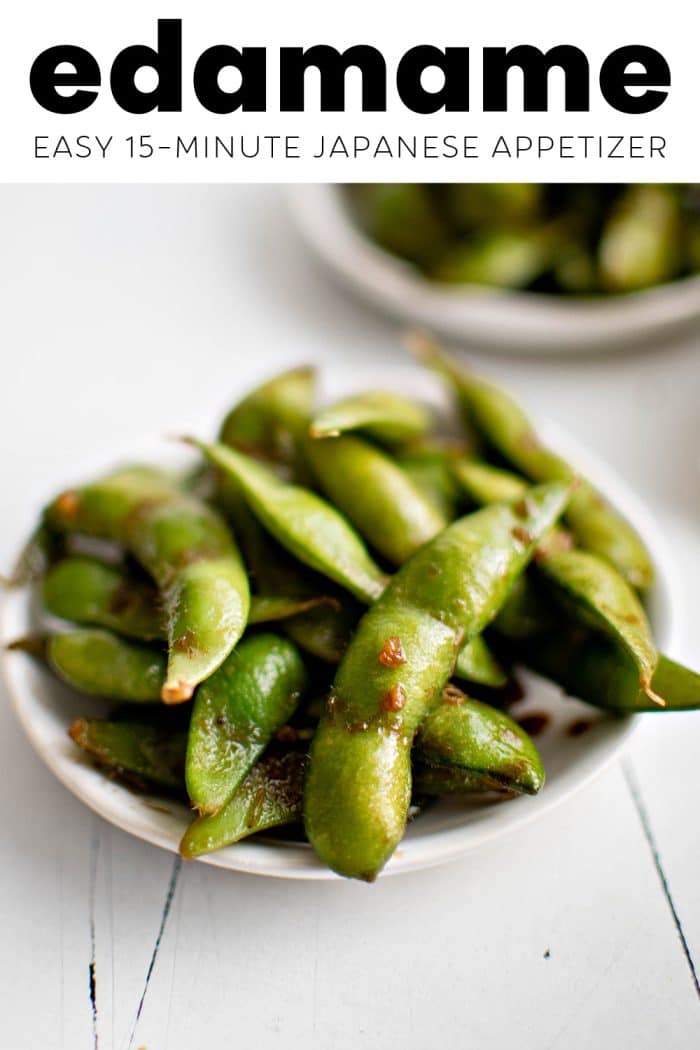This post may contain affiliate links. See my disclosure policy.
Bursting with loads of delicious flavor, this easy Edamame Recipe will be your new favorite side dish, snack, or appetizer. Sautéed with garlic and seasoned with soy sauce, it tastes just like what you’d get at your favorite Japanese restaurant and takes just 15 minutes to make.
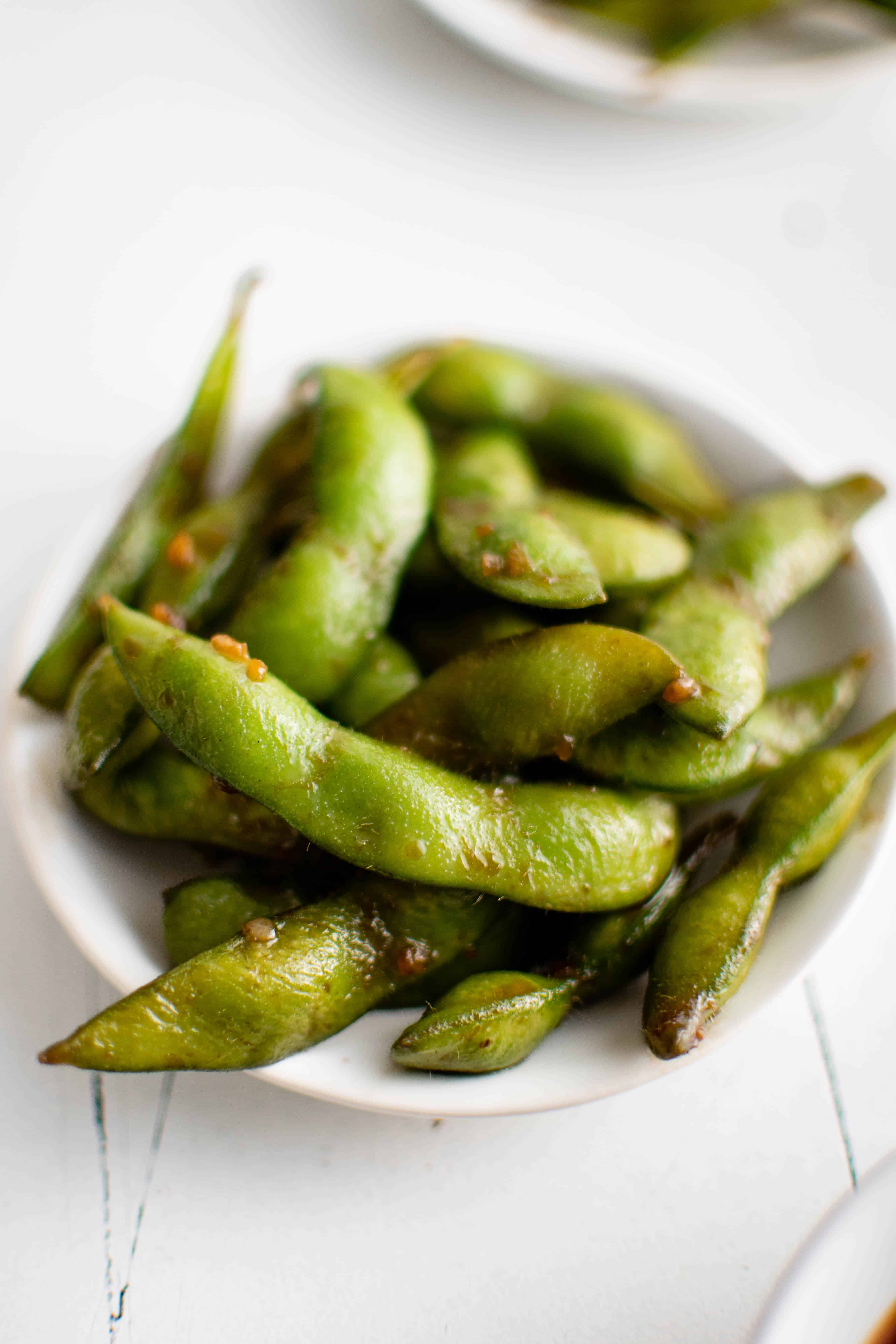
Table of Contents
What is Edamame?
Edamame is a Japanese dish made with immature, young soybeans that are harvested and picked before they harden. The name “edamame” comes from the Japanese term ‘stem beans (枝豆)’ because the beans were traditionally sold still attached to the stem. They are typically bright green, plump, and have a slightly sweet, nutty flavor.
A popular snack and ingredient in various East Asian dishes, edamame can be boiled, steamed, or even pan-fried and is often served with a sprinkle of salt for a simple yet delicious appetizer or healthy snack.
When serving edamame, you don’t actually eat the shell. Instead, you use your front teeth to pop the beans out of the shell gently- they come out really easily.
Is Edamame Good For You?
Nutritionally, edamame is a powerhouse. It’s high in protein, fiber, and a range of essential vitamins and minerals. Moreover, it’s a complete protein source, which means it provides all the essential amino acids your body needs. This makes it particularly beneficial for those following plant-based diets and those who are gluten-free.
Is Edamame Soy?
Yes, edamame is a type of soy. Specifically, edamame refers to immature soybeans that are still in their pods. These green soybeans are harvested before they have a chance to harden, and they are often boiled or steamed and served with salt. Despite being the same species as mature soybeans, edamame has a different nutritional profile and a unique, slightly sweet, and nutty flavor.
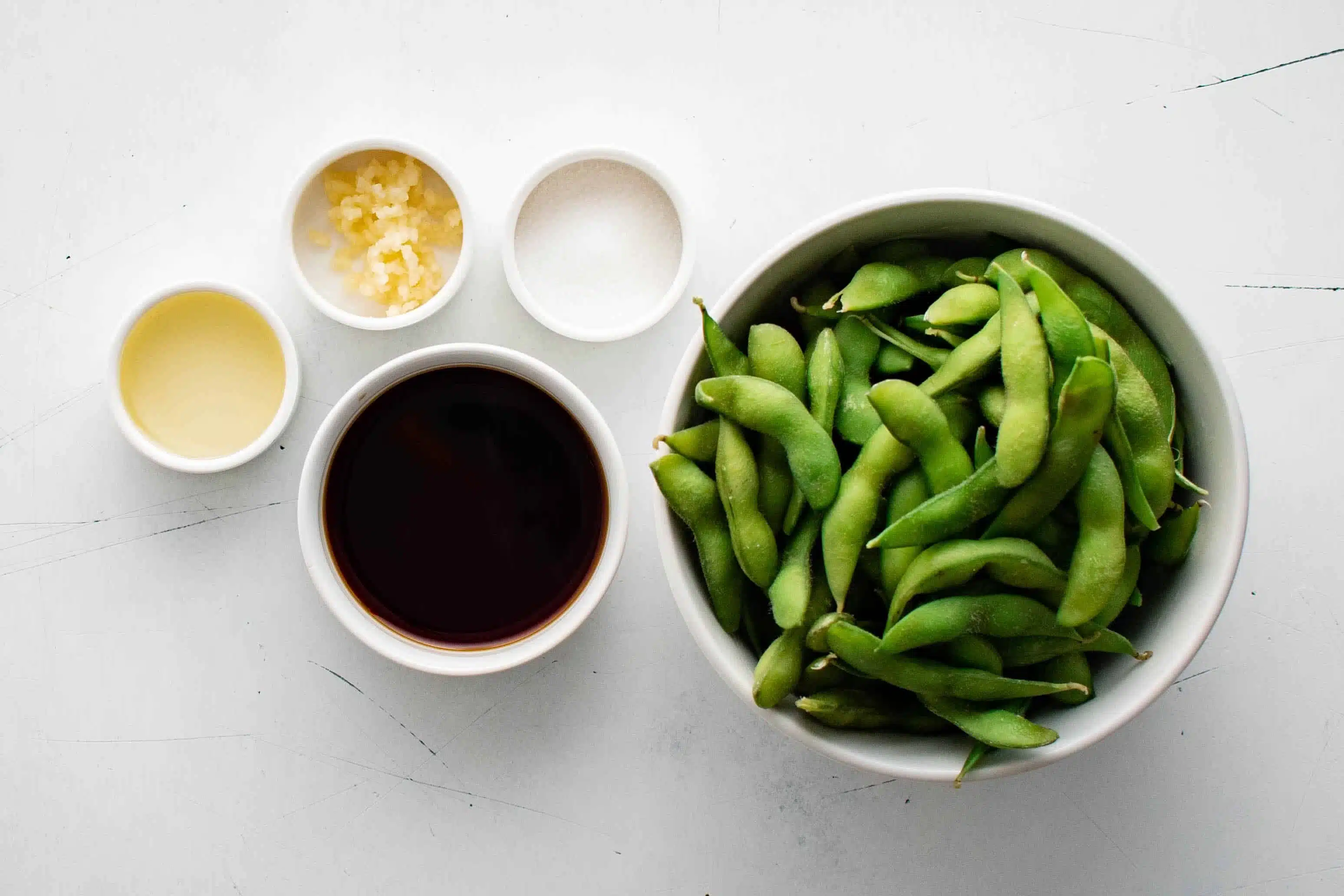
Fresh or Frozen Edamame – Which is Better?
Whether you choose fresh or frozen edamame largely depends on your personal preference, how you plan to use it, and what’s available to you. I have never seen fresh edamame at any of my local grocery stores, so I’ve never had the opportunity to compare the two. That said, I love the convenience of frozen edamame. It’s there when I need it, and it’s already been blanched for me, meaning that it doesn’t really need to be boiled before eating.
How to Cook Edamame
1. Boil the frozen edamame: Boil the edamame in a pot filled with six cups of boiling water and two tablespoons of salt. Cook for 3-4 minutes or until the edamame is tender and is easily released from their pods.
- Note: Because the edamame has already been blanched (cooked) and then frozen, we’re not really “cooking” the edamame in this step. This step is mostly to reheat, soften, and salt the edamame.
2. Sauté the garlic: Heat the vegetable oil (or olive oil) in a large pan or skillet set over medium heat. Add the minced garlic and cook until fragrant, about 30 seconds.
3. Stir fry the edamame pods: Mix in the boiled and drained edamame pods, soy sauce, and sugar. Cook for about 5 minutes, stirring often. Serve warm with a side of soy sauce for dipping.
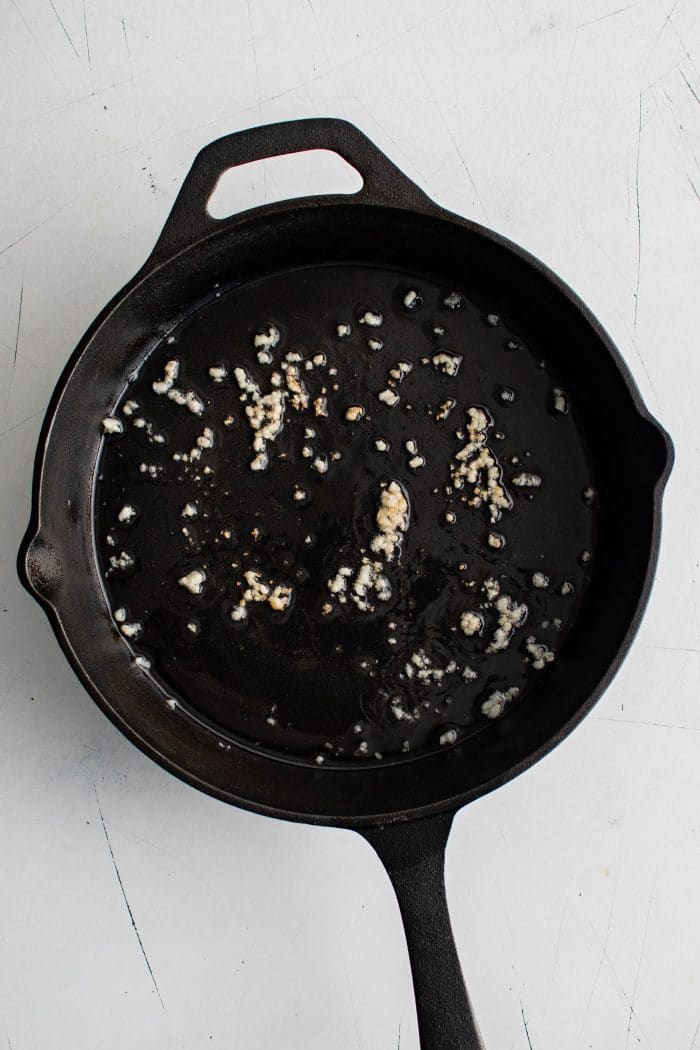
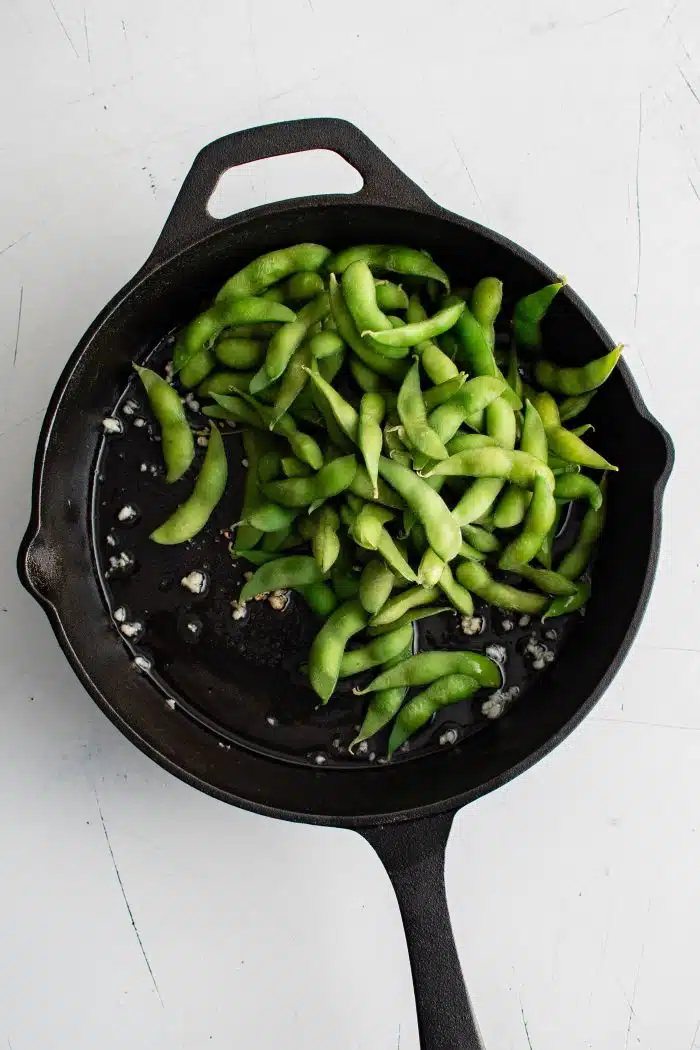
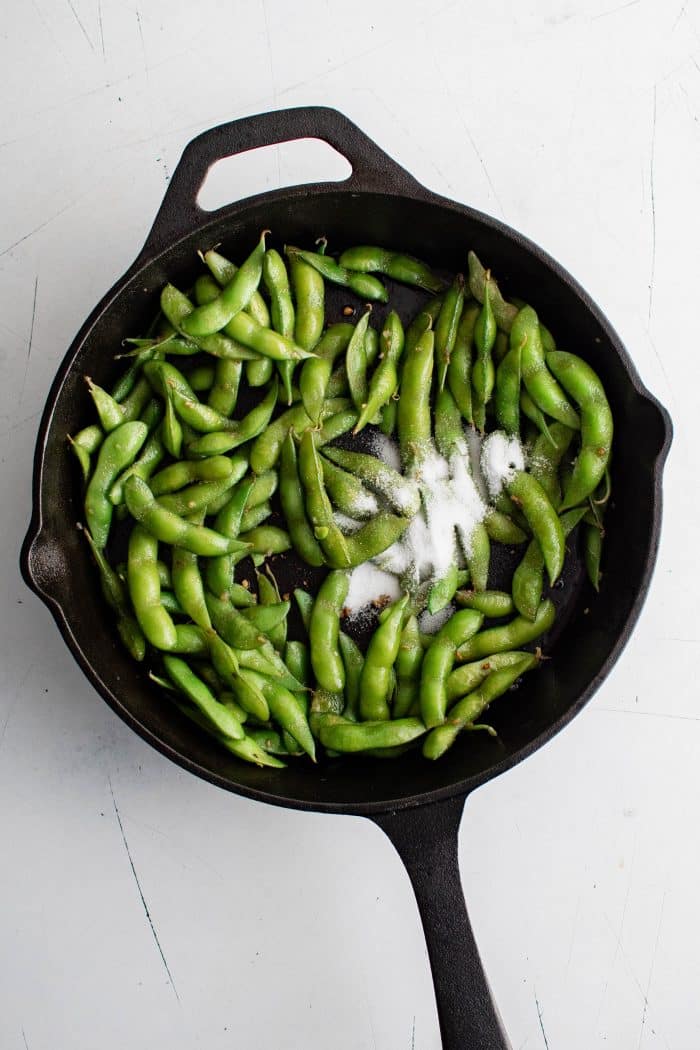
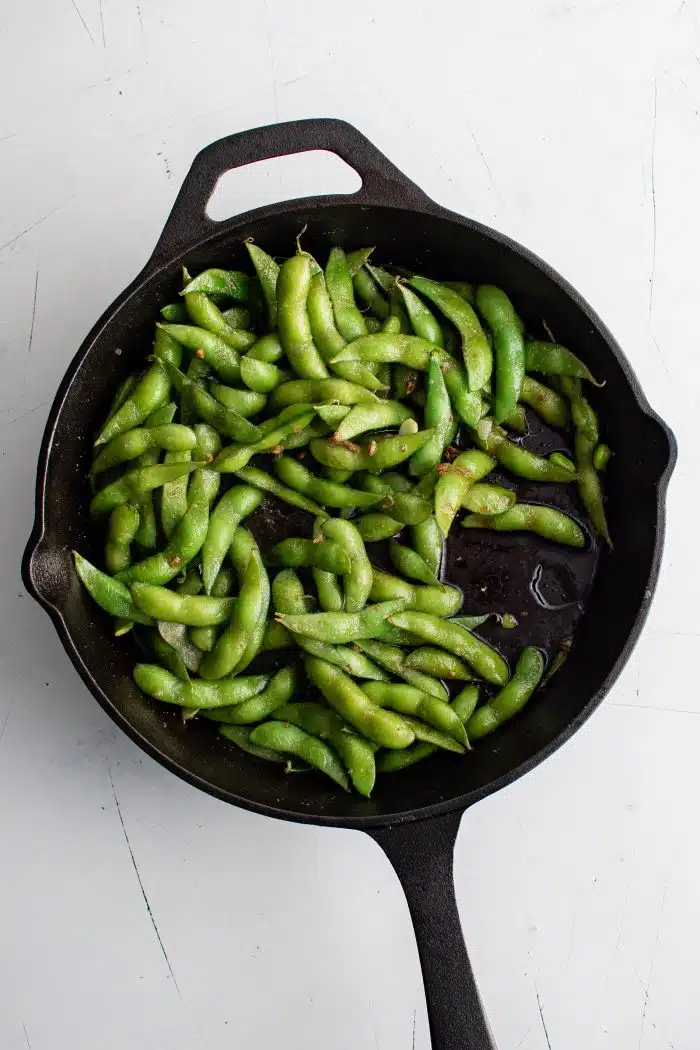
Recipe Tips
- Don’t overcook the edamame: When boiling, check every minute or so for tenderness. You want them just soft enough to pop the bean out of the shell.
- Make it spicy: Add 1-2 teaspoons of spicy chili sauce such as Sambal Oelek or Sriracha for spicy garlic edamame.
- Season to taste: Season with additional salt, sugar, or soy sauce, to taste.
- Use in recipes: Once cooked and shelled, edamame can be used in various dishes, including salads, soups, stir-fries, fried rice, and grain bowls. Some of my favorite recipes with edamame include this poke bowl, quinoa beet salad, and Asian broccoli salad.
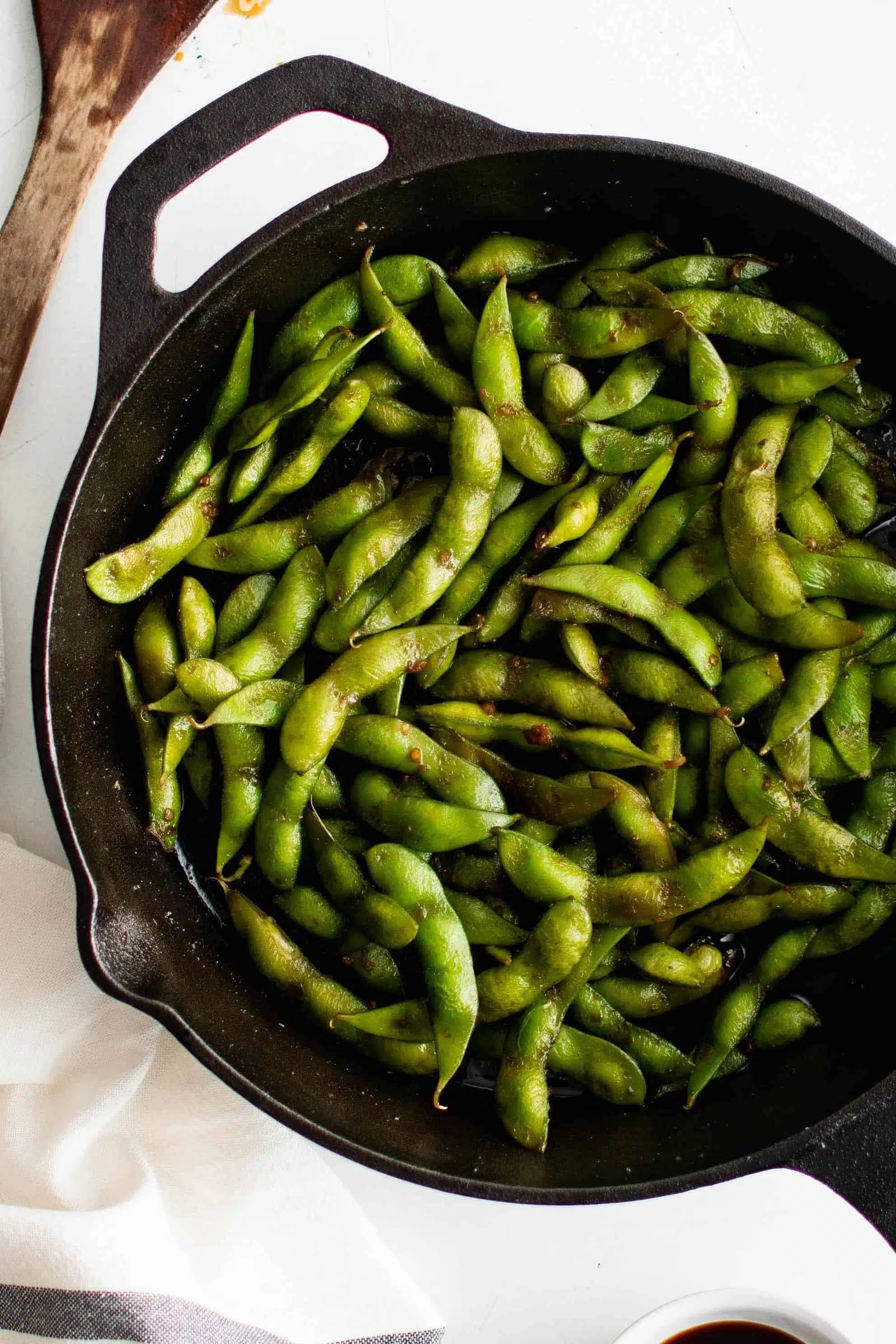
Storage and Freezing
Storing leftover cooked edamame: Allow the cooked edamame to cool completely before placing it in an airtight container. Transfer to the refrigerator. Transfer to the refrigerator for up to 3 days.
Freezing leftover cooked edamame: Allow the cooked edamame to cool completely, then spread it in a single layer on a baking sheet lined with parchment paper. This process, known as flash freezing, prevents the edamame beans from clumping together in the freezer. Place the baking sheet in the freezer and freeze until the edamame is fully frozen, typically about 1-2 hours. Once frozen, transfer the edamame to a freezer-safe bag or container and place it in the freezer for up to 3 months.
Reheating frozen edamame: Allow the frozen edamame to thaw in the refrigerator overnight before reheating in the microwave, on the stove, or in the oven.
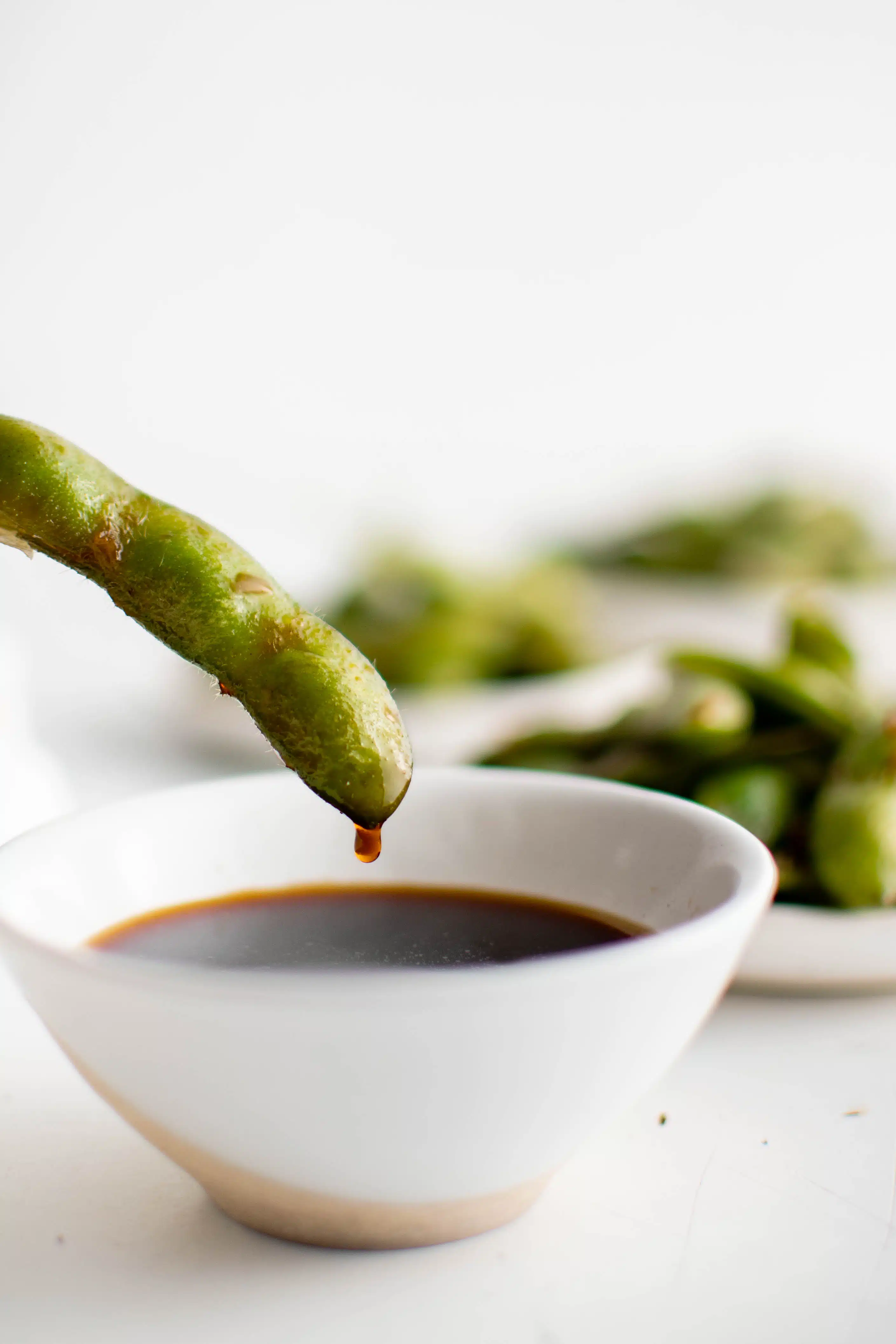
More Asian-Inspired Recipes:
- Easy Szechuan Chicken Recipe
- Beef and Broccoli Recipe
- Kung Pao Chicken
- Mongolian Beef
- Bok Choy Recipe
- Moo Goo Gai Pan Recipe
- Baked Teriyaki Chicken Recipe
If you try making this Edamame Recipe, please leave me a comment and let me know! I always love to hear your thoughts.
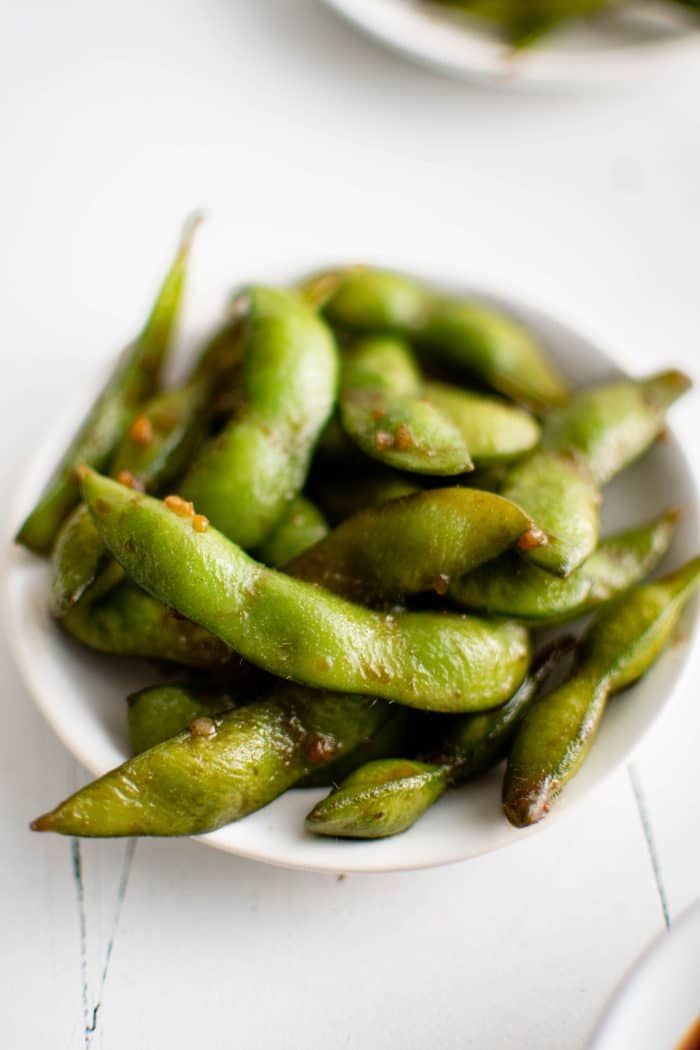
Easy Edamame Recipe
Ingredients
- 6 cups (1.4 liters) water
- 2 tablespoon sea salt
- 1 (12-ounce) bag frozen edamame
- 1 tablespoon vegetable oil
- 4 cloves garlic, minced
- 2 tablespoon low-sodium soy sauce
- 2 teaspoon granulated sugar
Instructions
- Add the water and sea salt to a large pot and bring to a boil. Add the edamame and cook for 3-4 minutes or until the edamame is tender and is easily released from their pods. Drain well.
- Heat the vegetable oil in a large pan or skillet set over medium heat. Add the minced garlic gloves and sauté until fragrant, about 30 seconds.
- Mix in the boiled and drained edamame pods, soy sauce, and sugar. Cook for about 5 minutes, stirring often.
- Best served warm.
Notes
- Optional – Add 1-2 teaspoons of spicy chili sauce such as Sambal Oelek or Sriracha for spicy garlic edamame.
- Leftovers – Keep leftovers stored in an airtight container in the refrigerator for up to 2 days.
Nutrition
Nutrition information is automatically calculated, so should only be used as an approximation.

